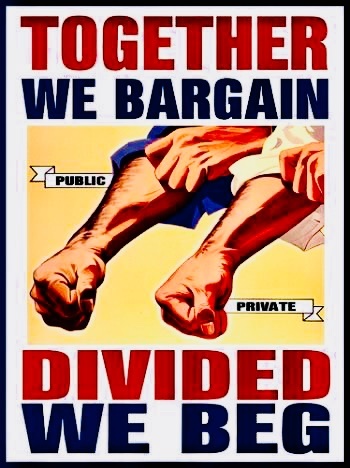Andy Ford, an NHS Unite activist from Warrington, reviews Workers Can Win: a Guide to Organising at Work (Pluto Press 2022)
In this book, Ian Allinson, a leading activist in Unite, has created a really useful guide for new and budding trade union activists. It addresses the gap left by the official trade unions and their education departments.
Too much trade union education amounts to either a retired convenor reminiscing about their time in industry or else union solicitors talking about their Employment Tribunal cases, neither of which is very relevant to trade unionism in the modern workplace. The big factories where, as they say “I was given a union form on my first day as an apprentice…” are nearly all long gone, and maybe a tenth of 1% of workplace employment cases end up in Tribunal.
Ian’s book is much more relevant and useful. It is aimed at any young activist who has started work and finds either that the union is not recognised, or if it is, there are no reps to organise the workforce to get their rights. New reps frequently find that the paid officials of the union are too busy to help. All too often they are left to find their own way.
Ian is well placed to write on the subject, having been a rep and later convenor at Fujitsu in Manchester (until made redundant in dubious circumstances), part of a big private company, where he organised an exemplary structure of reps and a branch and won some of the best agreements in the industry.
I worked with Ian on the North West Regional Committee of Unite and he was very good at putting his arguments and navigating the union structures. On one famous occasion he stood up at the Unite Rules Conference and successfully moved ‘reference back’ of the Standing Orders report, which was being used by the United Left leadership of the union to prevent proper debate of the union’s rules. Cue panic by the UL Executive and Len McCluskey! But they had no choice but to change their approach.
Why organise?
The book begins with question “Why organise at work?” and discusses the conflict inherent in the workplace, where bosses seek the maximum profit for the least investment in staff pay, training and welfare. The advice is to build organised power, not just the numbers of union members, to best advance the interests of the workforce. Ian examines the reasons given for not organising, like fear of becoming a target, “nobody’s interested”, the members are “bought off”, multiple competing unions, “the union is useless”, and all the real reasons workers will say, and he gives ideas on overcoming them.

The next stage is starting out as a rep, and the wise advice is to avoid making yourself easy prey – to make sure you have the resources of the wider union behind you, and that you are not too far ahead of the wider membership. You also need to be aware that someone is going to pass your emails to management – so don’t get carried away! Too many new reps get forced out a year or so into their activity as a rep, by various crooked methods. The key is to be there for the long haul.
Ian next looks at the various models of trade union activity – servicing, advocacy, mobilising and organising – and advocates a mix rather than using just one avenue. The servicing model sees the union as a provider of services – cheap mortgages, wills and even credit cards. Most workers are not interested, as that is not what they want from a trade union. And the ‘cheap services’ are often the same price as anyone can find with a Google search!
Advocacy sees the union as like the AA car repair service – you have a problem at work, and an ‘expert’ comes out to fix it! Union officials are portrayed as experts in organising, negotiating and media appearances, who can solve all the workers’ problems. This approach was very common in the post-Thatcher years in unions like the EETPU or Amicus, and it dis-empowers the workplace organisation, and ultimately undermines the union structures. It has, however, been used justify high salaries for officials! But there can never be enough highly paid officials to look after thousands of members. Self organisation is the only way.
Mobilising is better, as it is about using key issues and key individuals to mobilise the workforce in their own interests, and relying on their own talents. It is the approach put forward by the better end of the US trade unions, like Labor Notes, and writers like Kim Moody. But it is limited, in that it is aimed at mobilising the pre-existing membership and structure.
Organising is far better still. While retaining elements of the mobilising model, the aim is to build the union structure, with a rep in every department – “building our movement’s power rather than just skilfully deploying it”. The influence of Jane McAlevy on Ian’s thinking is evident here.
But there is no point throwing the baby out with the bathwater. In reality all the approaches have their own place – there is nothing wrong with getting good consumer deal for members; after all, that is what the Co-Op was all about. There is a place for advocacy and expertise in union work like in any other field; it is good to mobilise the existing members on their issues. Of course good trade unionists always see the importance of extending union organisation and strengthening and expanding union structures. All reps will use a mixture of methods. In this section, I did like the discussion of the strengths and the possible pitfalls in casework. Some reps get buried in casework and lose sight of the bigger picture, but an opposite danger is to neglect or ignore the casework, and then the members will be asking, “So what is this union for?”
Issue, Organise, Educate, Action
In Chapter 5 the book advises the new rep on ‘picking their battles’ and to go round the ‘organising cycle’ of Issue, Organise, Educate, Action.
The sixth chapter is very much influenced by the ideas of Jane McAlevy, with discussion of “winning the influential workers”, workplace mapping, communication trees and ‘structure tests.’ All are good tools, and should be used, but I have always thought that Jane McAlevy’s ideas lack a political dimension, perhaps because she is working in the USA, where there has been no Labour Party. She sees building a union as an organisational task, which it is, of course, but it also takes place in a political environment. As the best socialists in the labour movement often explain, the working class tends to switch from the industrial plane to the political plane, and back again.
Very importantly, the next chapter reminds reps to “Use your rights” which can be legal (like the anti-discrimination laws or Working Time Directive) or contractual, (like the NHS terms and conditions or company handbook in the private sector). Tony Mulhearn, a stalwart of the Liverpool Labour movement in the past, always said “Know your agreements!” – and it is the bedrock of being effective.

The book also advises reps on how to organise in the non-unionised section of the economy – which is most of it, in fact – using legal rights around health and safety, or the right to be accompanied to a formal hearing. A lot of unions attempt to simply ignore the non-union and anti-union companies, but even in those, a committed activist can really help workers on simple but important things, for example, their legal right to have access to toilets or protective clothing.
Chapter 8 looks at the myriad of ways workers try to assert their needs against the employer. Most disputes do not, in fact, go to strike action. Instead, the workers present their case, argue in hearings, or contact other departments or sites. They can also organise a work to rule in key sections, or threaten to leave or draw attention to turnover rates. They can lobby councils or government, or report the boss to the Health and Safety Executive or Inland Revenue. Unite has led the way in ‘leverage’ which is where other activists lobby the employers’ trade events or posh dinners. It can be very effective.
But the book does also look at the classic working-class tactic – the strike. It takes the reader through the complexities of British trade union law – for example, to run a strike a union official may have to fill in an 18-page form to even get legal clearance from the union to run a ballot! A strike also means handing over control to the paid officials and Ian does explain that union officials do come under serious pressure from their bosses, employers, government and press to settle a strike that is getting ‘too disruptive’.
Finally, Ian looks at dealing with management mischief and countermeasures, and the inevitable difficulties, limitations and mistakes. The only way to avoid mistakes is to do nothing.
Filling a gap
‘Workers Can Win’ really does fill a gap. Most books about unions are either written by academics who have the time to do it, or political groups with a point to make, or else legal people who look at things from the point of view of courts, tribunals and case law. Most union officials are eminently practical people who rarely write anything beyond a memoir. While interesting, like Len McCluskey’s ‘Always Red’ or Jack Jones’ ‘Union Man’, they are inherently a picture of the past.
So Ian Allinson is well placed, as a senior lay rep, and an activist with a political outlook, to write this book. The book does suffer a little bit by having been written and completed in the lull in trade union struggle after Corbynism but before the strike wave of last year and this, but the points made about organising apply in either environment.
As Ian was in the SWP for many years there is their hallmark mention of ‘rank and file-ism’ – which was their approach of counterposing paid officials and the “rank and file” members of the trade unions, rather than seeing a continual influence of the one upon the other. At its worst, that led them to write off the officials rather than seeing the union bureaucracy of as one more area of contest between working class ideas and those of our rulers.
But as he left the SWP at the time of their sexual abuse scandal and now works with the much less dogmatic RS21 group, there is very little distortion due to the mistaken politics of the SWP.
Ian has clearly used his enforced leisure after Fujitsu well, with a wealth of references to the work of writers on trade unions, industries and workplace organising. ‘Workers Can Win’ is a key resource for any serious union activist.



